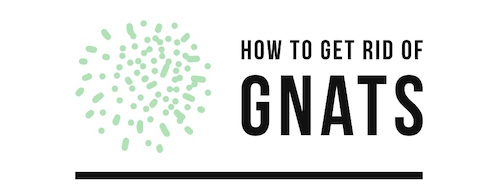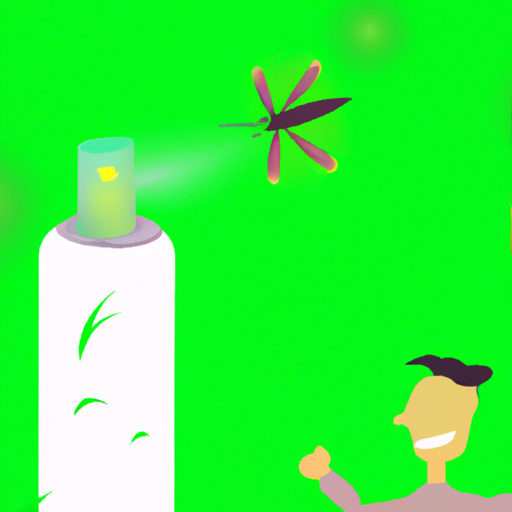How to Identify and Treat House Plant Gnats with Sprays
House plant gnats are small, flying insects that can be a nuisance to house plants. They feed on the roots and leaves of plants, causing damage and stunting growth. Fortunately, there are several ways to identify and treat house plant gnats with sprays.
Identifying House Plant Gnats
House plant gnats are small (1/8 inch long) black or dark brown flies with long legs and antennae. They often swarm around the soil surface of potted plants or fly around the room when disturbed. The larvae of these pests live in moist soil where they feed on decaying organic matter as well as roots and stems of young seedlings.
Treating House Plant Gnats With Sprays
The best way to get rid of house plant gnats is to use an insecticidal spray containing pyrethrin or neem oil. These products should be applied directly onto the soil surface where the larvae live, as well as onto any affected foliage or stems. It is important to follow label instructions carefully when using these products, including wearing protective clothing such as gloves and a face mask if necessary. Additionally, it may be necessary to repeat applications every few days until all signs of infestation have been eliminated.
In addition to insecticidal sprays, other methods can also help control house plant gnat populations such as removing any decaying organic matter from the potting mix or allowing the top layer of soil dry out between waterings so that larvae cannot survive in moist conditions for extended periods of time. Finally, yellow sticky traps placed near affected plants can help reduce adult populations by trapping them before they lay eggs in new areas within your home environment.
The Benefits of Using Natural House Plant Gnat Sprays
House plant gnats are a common problem for many homeowners. These tiny insects can cause damage to plants, as well as spread disease and contaminate food. Fortunately, there are several natural methods of controlling these pests without the use of harsh chemicals. Natural house plant gnat sprays offer an effective and safe way to keep these pests at bay.
One of the main benefits of using natural house plant gnat sprays is that they are non-toxic and safe for both humans and pets. Many chemical insecticides contain toxic ingredients that can be harmful if inhaled or ingested by people or animals in the home. Natural sprays, on the other hand, contain only natural ingredients such as essential oils which have been proven to be effective against houseplant gnats without posing any health risks.
Another benefit of using natural house plant gnat sprays is that they are easy to use and require minimal effort on your part. All you need to do is mix up a solution according to the instructions provided with your spray bottle, then spray it directly onto affected plants or areas where you suspect an infestation may be present. This method eliminates any guesswork involved in trying to identify which type of insecticide would work best against your particular pest problem – something that can often be difficult when dealing with chemical products due to their wide range of active ingredients and varying levels of effectiveness against different types of insects.
Finally, natural house plant gnat sprays provide long-term protection from future infestations by creating an environment that is inhospitable for these pests while also helping promote healthy growth in your plants over time through their nourishing properties such as providing essential nutrients like nitrogen and phosphorus which help promote strong root systems and lush foliage growth respectively.
In conclusion, using natural house plant gnat sprays offers numerous benefits over traditional chemical insecticides including being non-toxic, easy-to-use, long lasting protection from future infestations while also promoting healthy growth in your plants over time through their nourishing properties – making them a great choice for anyone looking for an effective yet safe way to control these pesky pests!
DIY Recipes for Homemade House Plant Gnat Sprays
1. Neem Oil Spray: Mix 1 teaspoon of neem oil with 1 quart of warm water and pour into a spray bottle. Shake well before each use and spray directly onto the soil, leaves, and stems of your houseplants to kill gnats.
2. Dish Soap Spray: Mix 2 tablespoons of liquid dish soap with 1 quart of warm water in a spray bottle. Shake well before each use and spray directly onto the soil, leaves, and stems of your houseplants to kill gnats.
3. Vinegar Spray: Mix equal parts white vinegar and water in a spray bottle (for example, one cup vinegar to one cup water). Shake well before each use and spray directly onto the soil, leaves, and stems of your houseplants to kill gnats.
4. Alcohol Spray: Mix equal parts rubbing alcohol (isopropyl alcohol) with water in a spray bottle (for example one cup rubbing alcohol to one cup water). Shake well before each use and spray directly onto the soil, leaves, and stems of your houseplants to kill gnats.
5. Garlic-Chili Pepper Spray: Blend together 3 cloves garlic with 2 cups hot peppers or chili peppers in two cups of warm water until smooth then strain out solids using cheesecloth or fine mesh strainer into a bowl or jar; discard solids after straining is complete then pour strained mixture into a clean empty container or jar; add two teaspoons liquid dish soap then mix thoroughly; pour mixture into an empty clean plastic squirt bottle; shake vigorously before each use then squirt mixture on topsoil around plants as needed for control; repeat every few days as needed until problem is resolved
Tips for Preventing House Plant Gnats with Spray Solutions
1. Keep the soil of your house plants dry. Gnats thrive in moist soil, so it is important to allow the top layer of soil to dry out between waterings.
2. Use a spray solution of neem oil and water to kill gnats on contact and prevent them from laying eggs in the soil. Mix 1 teaspoon of neem oil with 1 quart of warm water and spray directly onto the plant leaves, stems, and soil surface every 7-10 days until you no longer see any gnats or larvae present.
3. Create a sticky trap for adult gnats using yellow sticky cards or strips that can be purchased at most garden centers or online retailers. Place these traps near your house plants where they will attract adult gnats looking for food sources such as decaying organic matter in the soil or other plant debris on the surface of the potting mix. Replace these traps when they become full with adults or larvae stuck to them as this will help reduce their population over time.
4. Introduce beneficial nematodes into your potting mix which are microscopic worms that feed on fungus gnat larvae found in damp soils and can help reduce their population over time without harming your plants or other beneficial insects like pollinators that may visit them occasionally for nectar sources such as flowers produced by some species like African violets (Saintpaulia).
5. Make sure all containers used for growing houseplants have drainage holes at their base so excess moisture can escape from the potting mix instead of accumulating at its surface which could create an ideal environment for fungus gnat larvae to thrive in if left unchecked over time due to lack of proper drainage conditions being provided by these containers themselves when used indoors without access to natural sunlight which would otherwise help evaporate any excess moisture present within them more quickly than what would occur under artificial lighting conditions typically found inside homes during winter months when temperatures outside are too cold for most outdoor gardening activities anyway making indoor gardening much more popular during those times instead due largely due its convenience factor alone regardless if one has access to natural sunlight indoors or not since many people simply don’t have enough space available outdoors anymore nowadays either way unfortunately speaking…
Common Mistakes to Avoid When Using House Plant Gnat Sprays
1. Not reading the instructions: Before using any house plant gnat spray, it is important to read and follow the instructions on the label carefully. This will ensure that you use the product correctly and safely.
2. Not testing a small area first: Before applying a house plant gnat spray to your entire plant, it is important to test a small area first to make sure that it does not cause any damage or discoloration of your plants’ leaves or stems.
3. Applying too much: Applying too much of a house plant gnat spray can be harmful for your plants as well as for yourself and other people in your home, so make sure you follow the directions on the label carefully when applying it.
4. Not wearing protective gear: When using any type of pesticide or insecticide, including house plant gnat sprays, it is important to wear protective gear such as gloves and goggles in order to protect yourself from potential harm caused by exposure to these chemicals.
5. Not disposing of empty containers properly: After using a house plant gnat spray, make sure you dispose of its empty container properly according to local regulations in order to avoid potential environmental contamination from these chemicals entering into water sources or soil near your home
Q&A
1. What is house plant gnat spray?
House plant gnat spray is a type of insecticide designed to kill and repel the small, flying insects known as fungus gnats that commonly infest house plants.
2. How does it work?
House plant gnat sprays contain active ingredients such as pyrethrins or neem oil that are toxic to the larvae and adult stages of fungus gnats. When applied directly to the soil or foliage of affected plants, these active ingredients will kill any existing pests and help prevent future infestations.
3. Is it safe for my plants?
Yes, when used according to label instructions, house plant gnat sprays are generally safe for use on most types of indoor plants. However, it is always best to test a small area first before applying the product more widely in order to ensure that no damage occurs from its use.
4. How often should I apply it?
It depends on the severity of your infestation; however, most products recommend reapplying every 7-14 days until all signs of infestation have been eliminated from your home or garden environment.
5. Are there any precautions I should take when using this product?
Yes! Always read and follow label instructions carefully before using any pesticide product in order to ensure proper application and safety for both you and your plants! Additionally, be sure not to apply near food items or areas where children may come into contact with the product after application has taken place
Conclusion
House Plant Gnat Spray is an effective and safe way to get rid of gnats in your house plants. It is easy to use, affordable, and can be used on a variety of plants. With regular use, it can help keep your house plants free from gnats and other pests. It is important to follow the directions carefully when using this product in order to ensure its effectiveness and safety.

